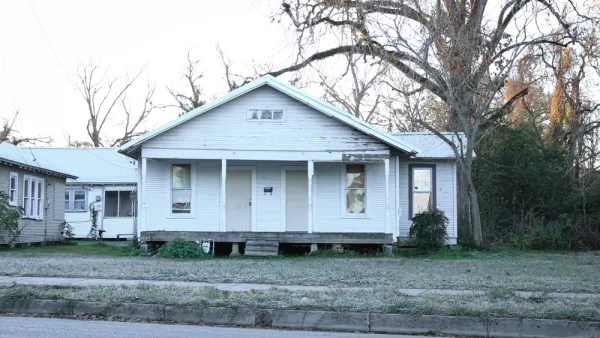The shortage of housing at all price points in the region is the main driver of high costs and the growing homelessness crisis.

In an op-ed in the Los Angeles Times, Michael Lens explains why building more housing, including market rate housing, is the best way to improve affordability and keep people from falling into homelessness.
“Despite investments in supportive housing and services, the number of Angelenos who struggle to stay housed has remained unacceptably high. Further, Black Angelenos are nearly seven times as likely to experience homelessness as the rest of L.A. County,” Lens writes.
To address the crisis, newly elected mayor Karen Bass has declared a state of emergency. “The declaration gives her power to convert hotel rooms into housing, sign master leases for entire buildings and expedite housing approvals. She is determined to see more temporary shelters and subsidized housing be built.”
But as Lens explains, “Moving people into temporary quarters might seem like the only quick solution, but any approach that relies on shelters runs counter to the research evidence that permanent housing solutions are both less costly and more effective.” In fact, “Getting people off the street makes only a small dent in the problem if those people are replaced by new distressed renters.” A bigger problem is the housing shortage in the region. Once zoned for 10 million housing units, the city is now zoned for only 4 million, not keeping up with its growing population.
Despite gentrification and displacement concerns, “Allowing more and faster production of market-rate housing can slow the pace at which rent rises and make our housing subsidy dollars go further.” Lens argues that “If we build new housing, the neighborhood will still change, but incoming renters have somewhere to go that’s not already occupied.”
Considering that building subsidized housing for all who need it is likely an unrealistic goal, Lens writes, promoting more housing construction of all types is the next best solution to the housing crisis.
FULL STORY: Op-Ed: How do we keep L.A.'s housing costs affordable? Build more homes

Analysis: Cybertruck Fatality Rate Far Exceeds That of Ford Pinto
The Tesla Cybertruck was recalled seven times last year.

National Parks Layoffs Will Cause Communities to Lose Billions
Thousands of essential park workers were laid off this week, just before the busy spring break season.

Retro-silient?: America’s First “Eco-burb,” The Woodlands Turns 50
A master-planned community north of Houston offers lessons on green infrastructure and resilient design, but falls short of its founder’s lofty affordability and walkability goals.

Test News Post 1
This is a summary

Analysis: Cybertruck Fatality Rate Far Exceeds That of Ford Pinto
The Tesla Cybertruck was recalled seven times last year.

Test News Headline 46
Test for the image on the front page.
Urban Design for Planners 1: Software Tools
This six-course series explores essential urban design concepts using open source software and equips planners with the tools they need to participate fully in the urban design process.
Planning for Universal Design
Learn the tools for implementing Universal Design in planning regulations.
EMC Planning Group, Inc.
Planetizen
Planetizen
Mpact (formerly Rail~Volution)
Great Falls Development Authority, Inc.
HUDs Office of Policy Development and Research
NYU Wagner Graduate School of Public Service




























